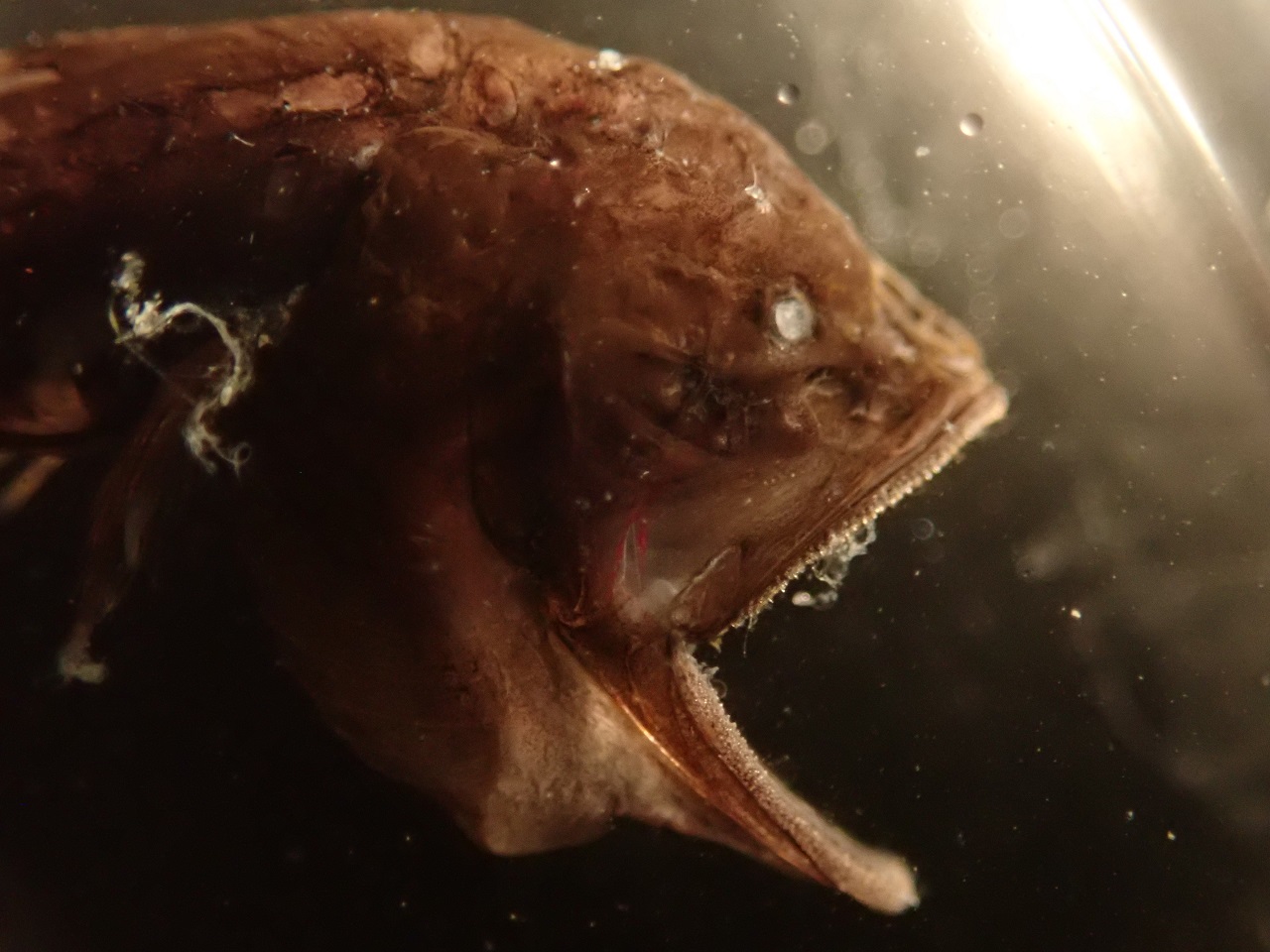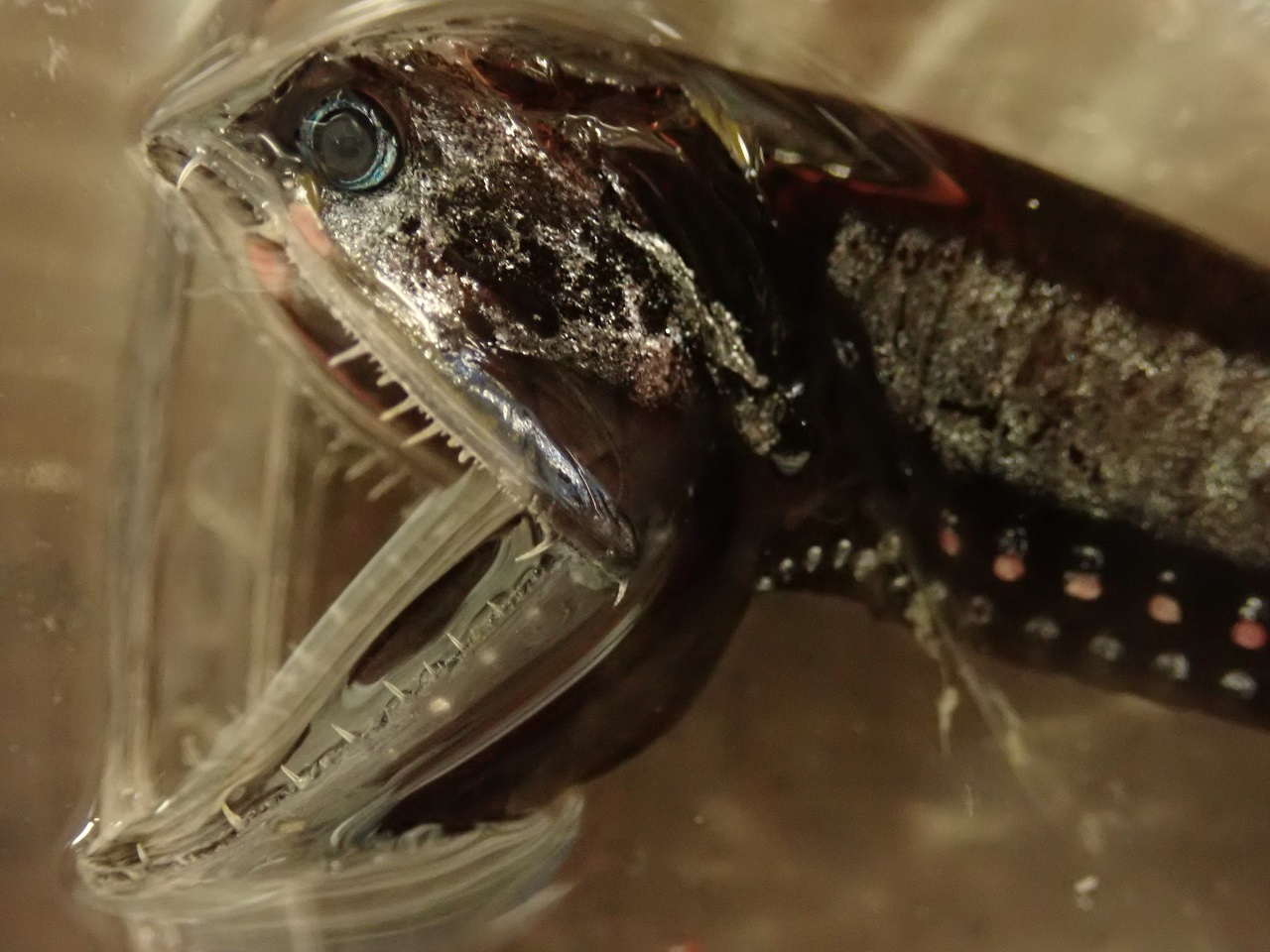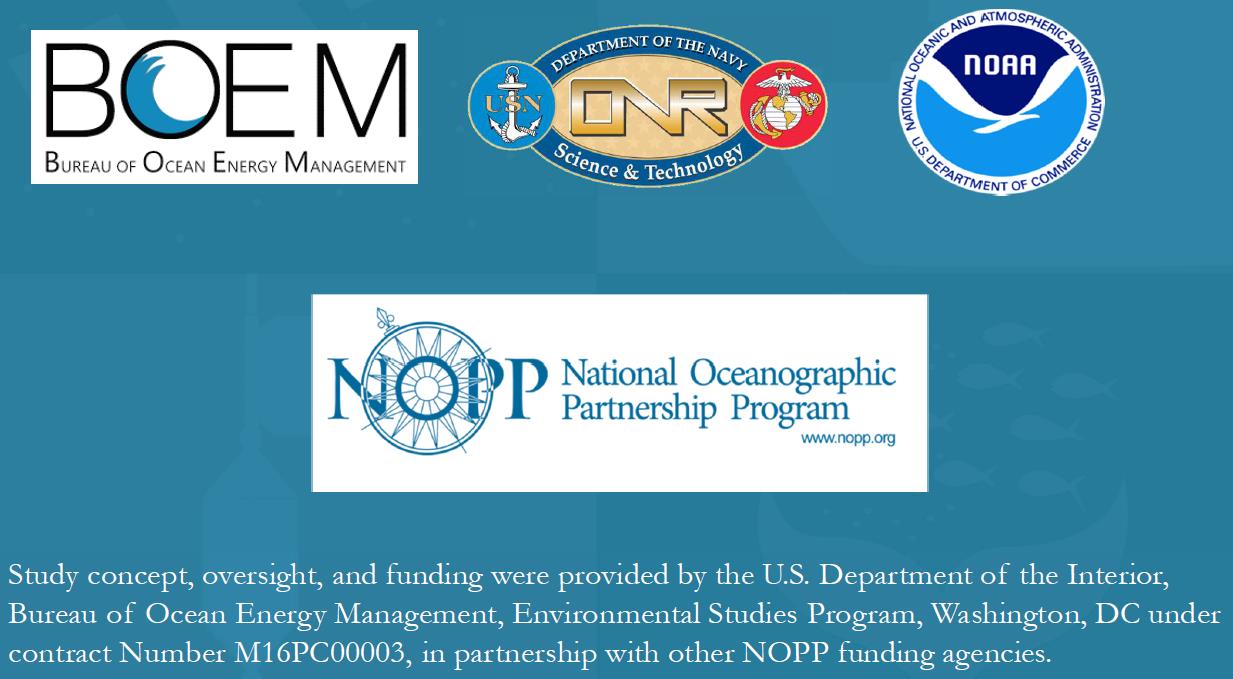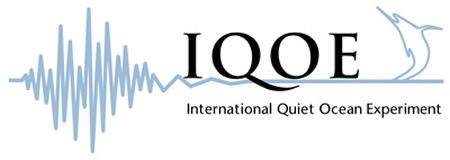As I’m sure you’re all aware, ADEON 2 has been filled with quite a few interesting happenings so far from the acoustic side of things and even with regard to our marine mammal watches. This is Sebastian Velez, your resident ichthyologist, checking in and ready to fill you in on some of the more fishy discoveries we’ve made on ADEON 2 thus far. As a reminder my function onboard this cruise is to help identify some of the fishes we’ve caught using the IKMT net. On average we tow the net at a speed of about 2.5 knots through the water (just under 3mph) which is pretty slow and limits our ability to catch larger fish who can easily avoid the net at that speed. As a result we usually catch smaller juvenile and larval fishes in our tows.
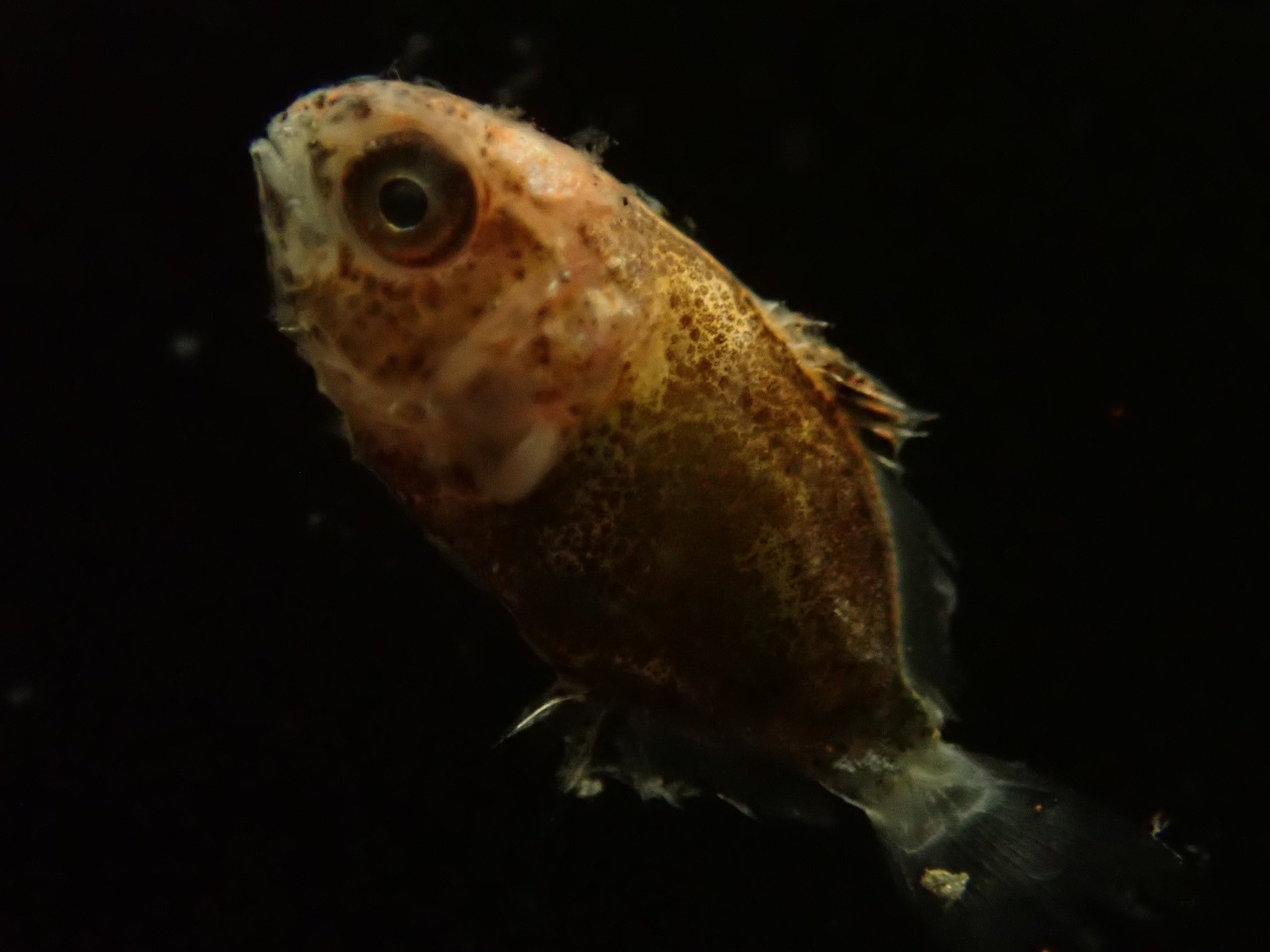
The problem with identifying these larval and juvenile fishes is that they often have no real resemblance to their adult counterparts. It’s kind of like trying to match a caterpillar to a butterfly without knowing what happens in the middle. To help with this problem, I use a series of taxonomic keys/guides to help me narrow down what the animal might be. It also helps that my masters research focused on the identification of many larval and juvenile fishes.
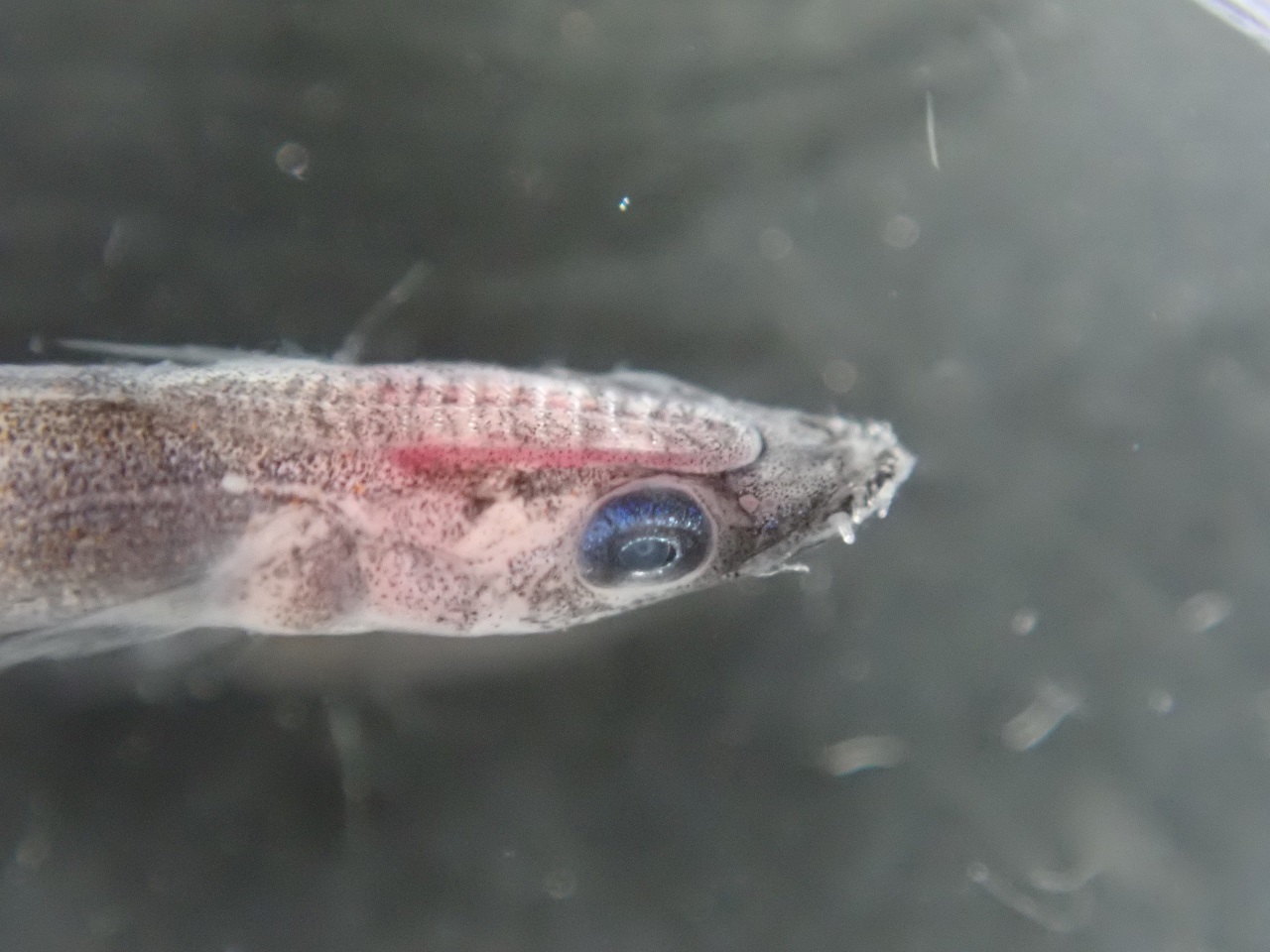
While onboard the R/V Endeavor, we’ve sampled from a number of different depths during the nighttime in order to catch some of the deeper organisms that migrate to shallower depths on a daily basis. This behavior is known as diel vertical migration, and it is the largest movement of animals on the planet and takes place every day as the sun sets and rises. Many of these deeper animals can create their own light (bioluminescence) using light-producing organs called photophores for a number of different uses including defense, camouflage, and attracting prey.

